The third installment of my very own Media Ecology course. The rest of this post contains the full shooting script with embedded slides, and so can be considered a more boring print-form of the video.
Hi! I’m Clinton, and this is Media Ecology for the Online Community as Classroom. Today we are going to take a deep dive into two monumental books by Swiss architectural historian Siegfried Giedion, because in this series we are opting to take the long-way home to our title subject, situating computers and cyberspace as just one more development of the ever-evolving ground upon which—and, increasingly, within which—human communities gather.
The common-ground in the pre-electric world comprised parlors, salons, town-squres, and churches so Giedion’s work is invaluable in bridging deep perception of those environments with our world, when community is vitiated by so-many interceding technologies. As we ramp-up to an excavation of embodied humanity from video-textual computer interface, we have to understand our condition contextualized within the long history of humanity’s relation to the rolling changes of literate, artisinal, industrial and electronic forms. Canadian Marshall McLuhan embodies the quest to unearth that common ground in a world rocked by tele-vision, and so to trace his life and inspirations is to inhere one’s self within the penetrating sense of technological world we have inherited.
Let’s first summarize the last video and continue our biography.
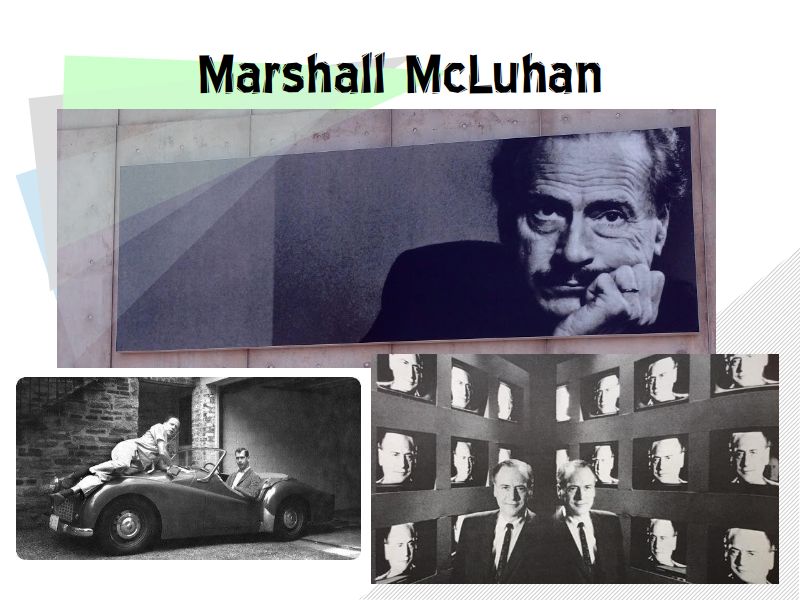
As we saw, young McLuhan diligently re-cognized the recent history of poetry as a technology, gradually progressing from the use of words to render in the mind romantic sentiments about natural landscapes, toward becoming a manipulator of the mind’s inner-world directly. His toolkit for elaborating the progression of this technique included his intensive study of The Trivium, comprising classical Grammar, Rhetoric, and Dialectic which, for McLuhan, was the reconstitution of the genetic, oral Logos in a form congruent to the scribal medieval world of letters. Abstract modern poetry was, in turn an attempt to re-constitute language—The Word—as fundament for the modern industrial, networked scientific 20th century.
By the end of the 30s McLuhan converted to Catholicism, largely inspired by the paradoxical writings of G.K. Chesterton. He courted and married a southern belle from Texas named Corrine Lewis, and had become a university English professor, moving about before finally ending up teaching at St. Michael’s College at the University of Toronto in 1946. While teaching, he had been having difficulties relating his old poetry to his students. By comparison he found great success in teaching them literary criticism by applying it to pop culture and advertisements with which the students were familiar—He was helping them analyze the media which actually, directly made up their world. Material for analysis was abundant, and McLuhan filled boxes and boxes in his office with advertisements snipped out of magazines and newspapers for classroom purposes. These became the raw material for his first book, 1951’s The Mechanical Bride: The Folklore of Industrial Man.
McLuhan read widely, and I cover the dedication of his vast personal library to UNESCO in episode five of my Life in the Foam podcast. He basically used his students as personal research assistants, to run down his avenues of interest and read for him by proxy. He’d entreat every specialist he met to recommend to him the two best, most important books written about their field of expertise. He was an incessant conversationalist and avid debater, known for inviting students or new acquaintances home for lunch or dinner and then talking with them well into the night, often oblivious, to Corrine’s chagrin, to how prepared the house or pantry may have been for hosting guests on that particular day.
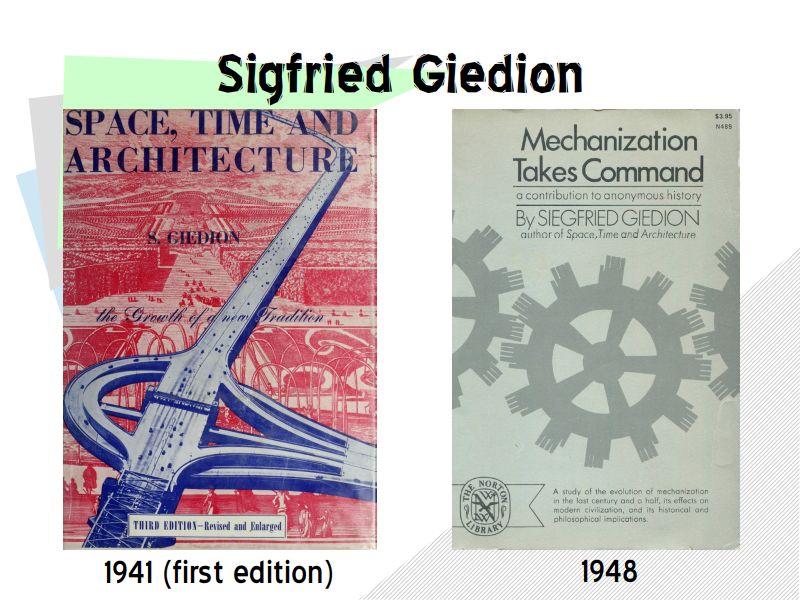
In 1943, McLuhan met Siegfried Giedion, and immediately devoured his first book. In an 1967 interview with Gerd Stearn, McLuhan recalled
Space, Time and Architecture was one of the great events of my lifetime.
The approach taken in that book, and in Giedion’s second great work, Mechanization Takes Command, became foundational in McLuhan’s approach to media studies.
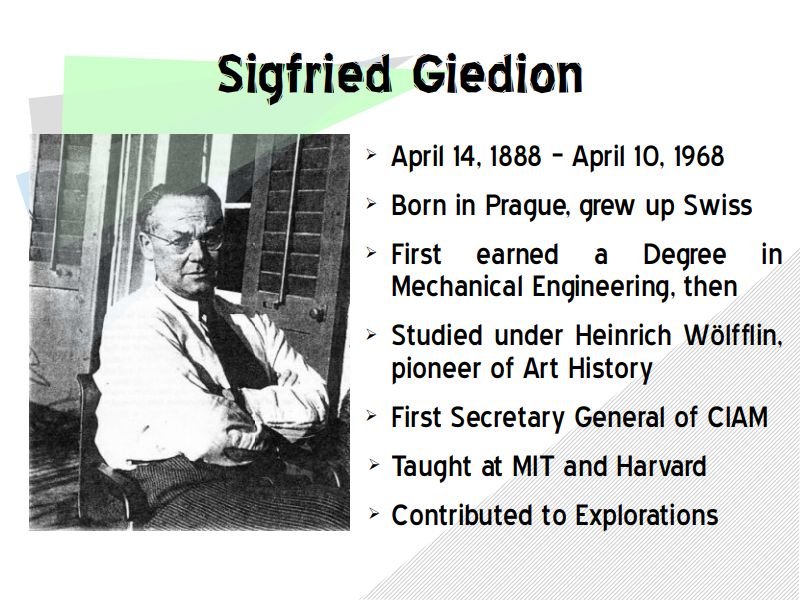
The Swiss historian of architecture Sigfried Giedion was born in 1888. He had degrees in mechanical engineering and art history, and the strange confluence of those disciplines lead to his two epic books works surveying the development of the technology and art: from their renaissance precursors, through to the industrial age, straight up to modern times, and then projecting forward to the post-war future.
As McLuhan told Stearn,
Giedion gave us a language for tackling the structural world of architecture and artifacts of many kinds in the ordinary environment. He learned this language from his preceptor, Wölfflin, whose principles of art history revolutionized the entire language of art criticism… Giedion began to study the environment as a structural, artistic work—he saw language in streets, buildings, the very texture of forms.
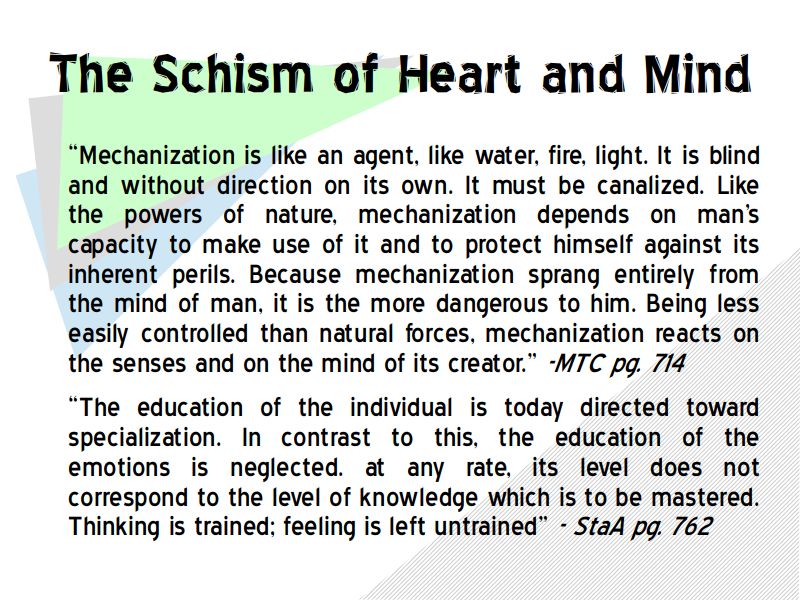
As an English professor, McLuhan’s direct study of classical manuscripts and literature lead to his distillation of a cycle of breakdown and reconstitution of Logos, or meaning-constitutive language usage, evident in a millennia-long “Ancient Quarrel” in the West; [a quarrel] of Dialectic, or logic, verses the sensory input and output of both Grammer and Rhetoric.
Architectural art-historian Giedion had quite independently elucidated that very same split in his study of human handiworks and objects of manufacture. What McLuhan had detected in the written and spoken word, Giedion diagnosed with his “language of streets, buildings, and the very texture of forms.” In both cases was evident a rending of the mind from the heart, of thinking from feeling, of logic from emotions, of science from art. Of PC from Mac, (or, maybe Unix Philosophy from Mac, but let’s not get ahead of ourselves.)
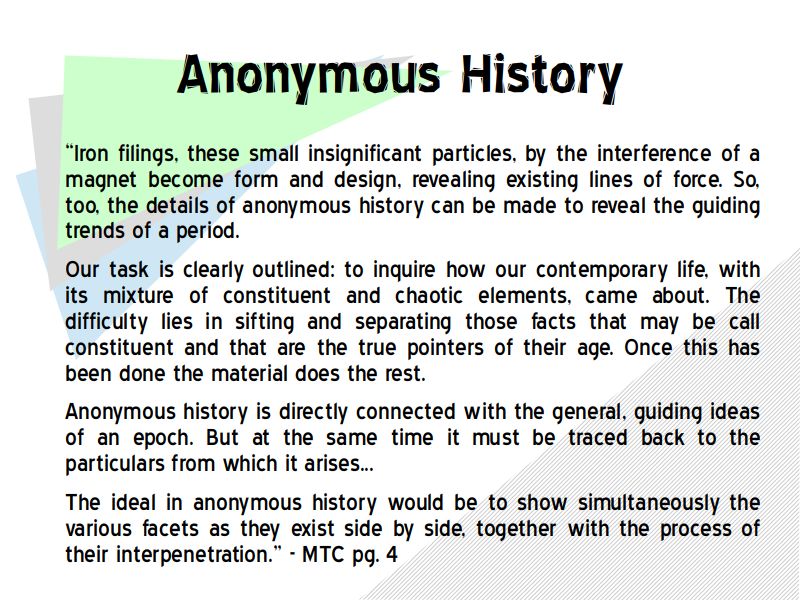
In order to illustrate this split, Giedion pioneers a new scholarly approach he calls “anonymous history”.
His sprawling, 800 page books cuts through dozens and dozens of topics, drawn from his decades of research into the histories of many common-place objects and forms, taken totally for granted, have histories and elements which remain totally unarticulated and invisible to non-specialists.
Just to give you a taste, he encyclopedically expound the origins and evolution of the tumbler lock, the growth of the iron and steel industries, the many permutations of the writing desk, the progressive improvements in humane technology and practices of animal handling in abattoirs, the development of factory work and assembly lines, the hap-hazard, trial-and-error realization of the rules of urban planning, the mechanization of the kneading of dough, the creation of scientific management in modern corporations and its dehumanizing effects, the forging of new architectural styles in the wild western American front, the intricacies of the mechanical loom, the amalgamation of today’s comprehensive home kitchen, and the history of bathing and ablution in many cultures over the centuries. That’s just some of it, And it’s all framed within a comprehensive, progressively unfolding art history lesson.
His research was challenged by the ubiquity of his subjects of inquiry. Many times old product catalogues, schematics, and photographs of the mundane places and things he was interested in had only been just recently disposed of as useless and taking up space, right before he had arrived to study them. His laments over the holes in his narratives, in light of the richness and fullness of his work, evince the ambition of his exhaustive reach.
He writes:
Picasso once wrote, “The artist is a receptacle for emotions, regardless of whether they spring from heaven, from earth, from a scrap of paper, from a passing face, or from a spider’s web. That is why he must not distinguish between things. Quartiers de noblesse (which was an aristocratic method of calculation to precisely quantify the nobility of one’s lineage) do not exist among objects.” [end Picasso quote; Giedion continues] The historian has to take the same attitude toward his material: he wants to know the truth about life, and he must take it where he finds it. It will not do for him to study only the highest artistic realizations of a period. Often he can learn more about the forces which shape its life from the common objects and utensils which are the undisguised products of its industry.
Now remember what I said last time; I’m not art student nor a historian so don’t expect this video to be scholarly. And this is about feels meeting facts, so it’s not about being objective. The end goal of my videos is to arrive at an intuitive understanding of Marshall McLuhan’s media ecology, so, to that end, we’re gonna get down-right mythopoetic here, okay?
Here we go: Let’s feel the texture of a few select swathes of Giedon’s rich historical tapestry, which was woven specially-intended to balm and mend the fractured modern psyche; to ultimately reunify the human soul.
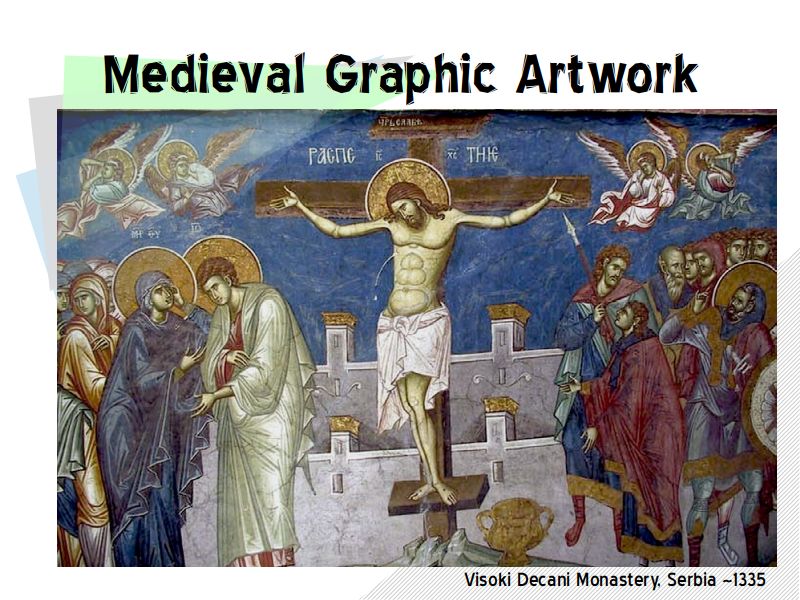
For most of human history, the objects of a drawing or painting were each portrayed in their own full sense, arranged by relation to the other objects in flat juxtaposition in two-dimensions. But in Florence, around 1400, the renaissance began with a new, private, personal conception of space, complementary to a new sort of person.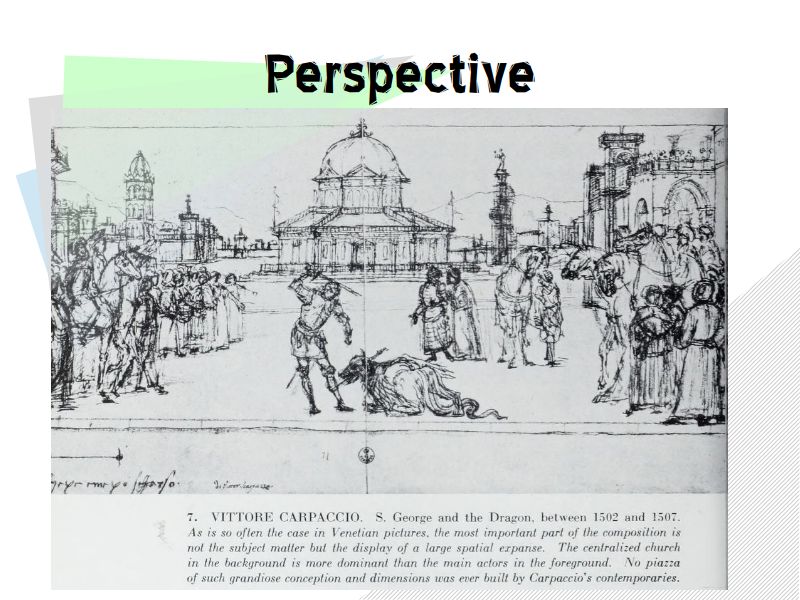
This space conception was captured a new graphic art style called “perspective”, which contorted on the canvas the shape and sizes of each element in the scene in accordance to the “point of view” of a single beholder looking ‘in’ to it.
Giedion writes
With the invention of perspective the modern notion of individualism found its artistic counterpart.
Big things were up close, small things were far away, objects were skewed and stretched and angled so as to seem to exist in a specific position and depth in space relative to the viewer. For the first time, areas and lines on a flat surface became virtual; became directly analogous in the visual sense to the Euclid’s conception of the geometry of physical reality.
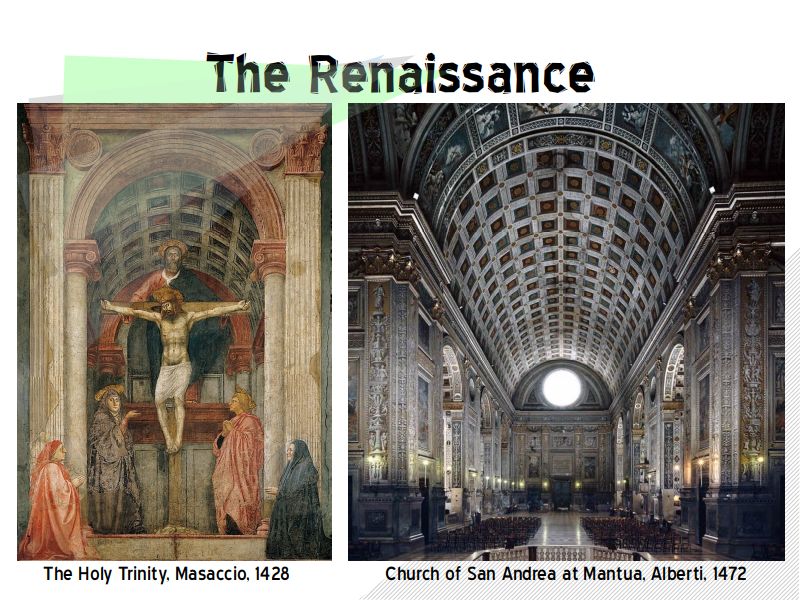
In other words, the contents of the two-dimensional canvas in perspective-style is precisely verisimilar to three dimensional space. This early Fresco, with its three-dimensional barrel-vaulted ceiling, astounded worshipers with its illusion of creating a hole in the wall. But it is also the first presentation of a viable solution to a long-standing architectural problem with vaulting ceilings which would only be manifested concretely decades later.
In Giedion’s telling, perspective art as a technical skill was taken up nearly unanimously by the artists of the culture just as soon as it was invented. This signifies a near-complete unity of thinking and feeling at the flash-point of the Renaissance: the artist and the scientist were the one in the same person.
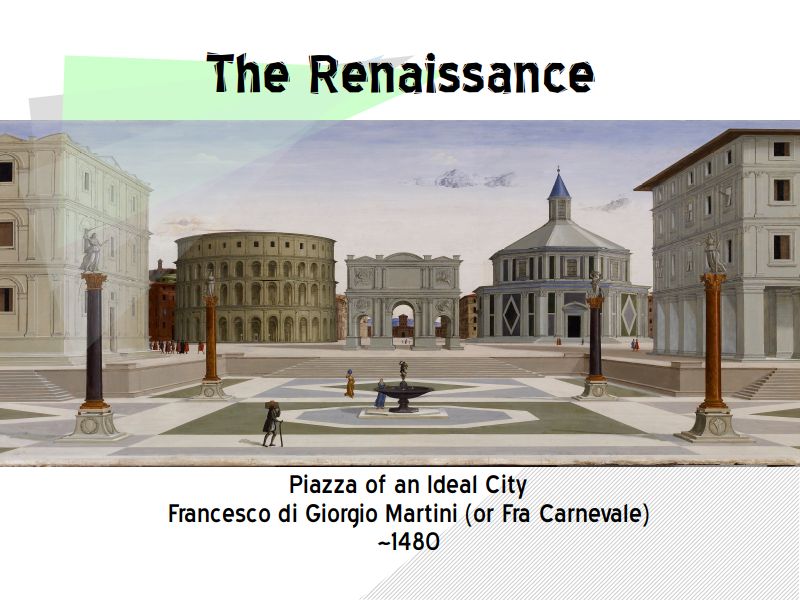
The architecture of this era was monumental, with a capital M, made of simple shapes, grand and majestic, using all the innovations which the new scientific conceptions of space inspired.
Urban planning began ideating cities as emanating from a central focal point outward, geometrically structured and star-shaped toward their outer defensive walls. Throughout the renaissance, all levels of design from single-room interiors to buildings to vast city layouts were coordinated through the rule of centralized planners. Giedion places polymaths like Michelangelo and Da Vinci within this understanding of the age. From there *Space, Time and Architecture* goes on to the story of the emergence of the Baroque style.
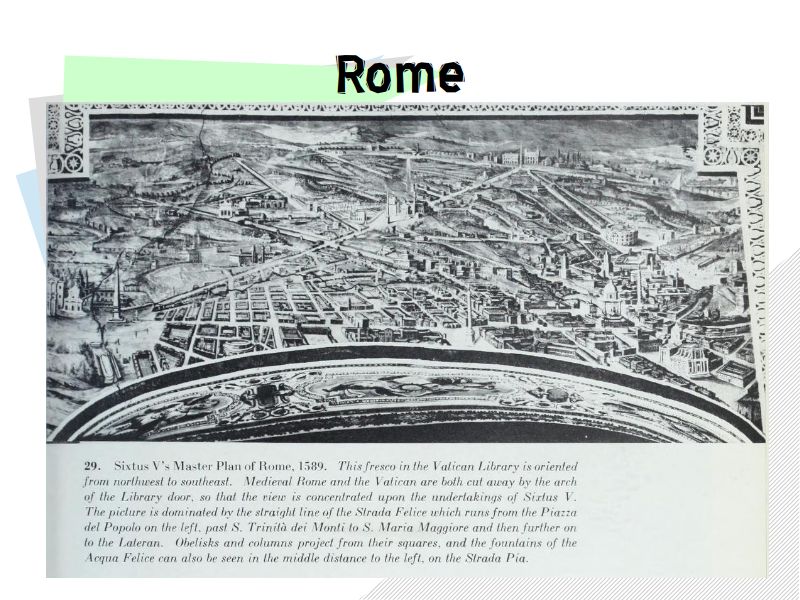
Baroque emerges from the more massive, disorganized development of Rome in the late 16th century initiated under Pope Sixtus the fifth, the first modern town planner. Here the development of cities by many different competing developers and financiers may have been indirectly guided through regulation, road-planning, and zoning but was otherwise beyond centralized vision and control.
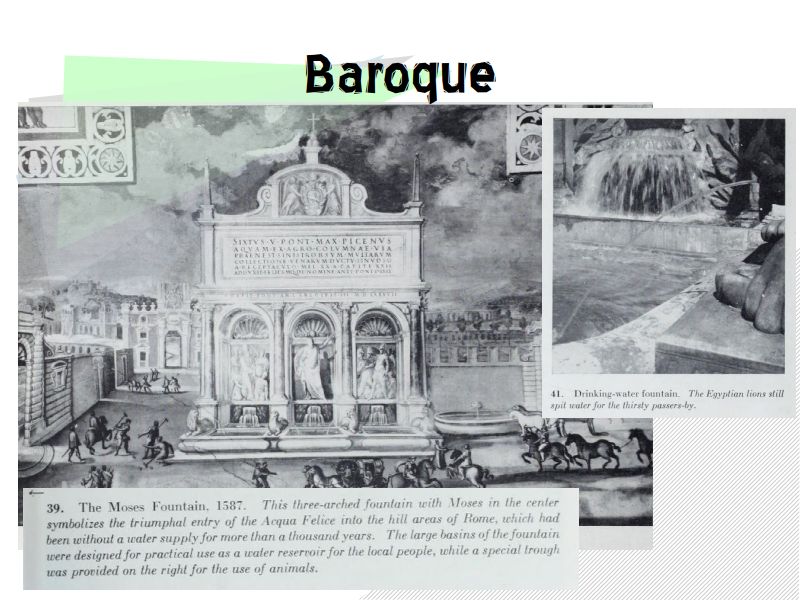
For instance, Sixtus the fifth restored the ancient aqueducts, culminating in this audaciously monumental water fountain which was ample enough for its many intended purposes, but aesthetically completely out-of-place. Rapid city growth had broken the human, urban-scale of the Renaissance, and from its elemental forms were spun a sometimes symphonious, often cacophonous explosion of divergent elaborations and disproportionate, jarring juxtapositions.
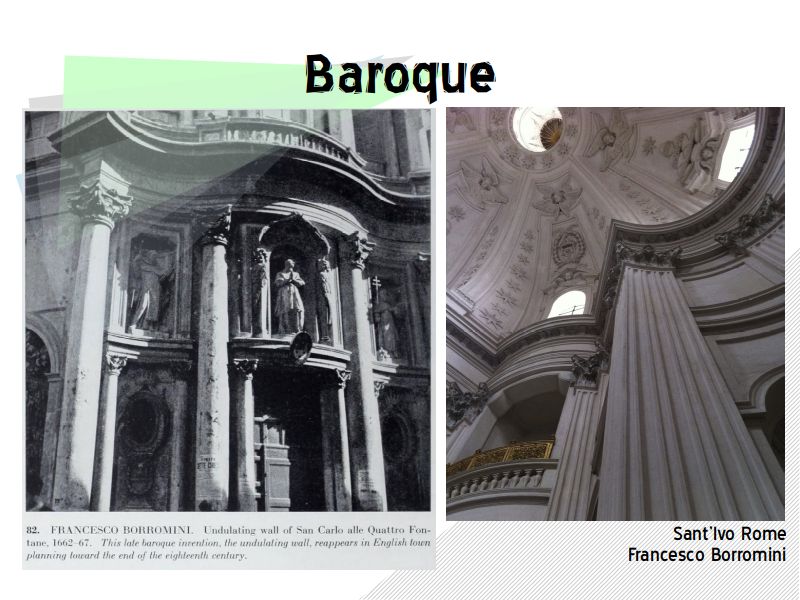
Freed from restraints imposed by a ruling class of prudent planners, Baroque architectural designs developed spontaneously, becoming more and more experimental and creative. Curvaceous undulating walls, whose waves supplanted the straight lines of the renaissance were particularly contentious and often seen as decadent and gaudy. And Baroque *architecture* portended patterns for many *other* areas of human invention and creativity.
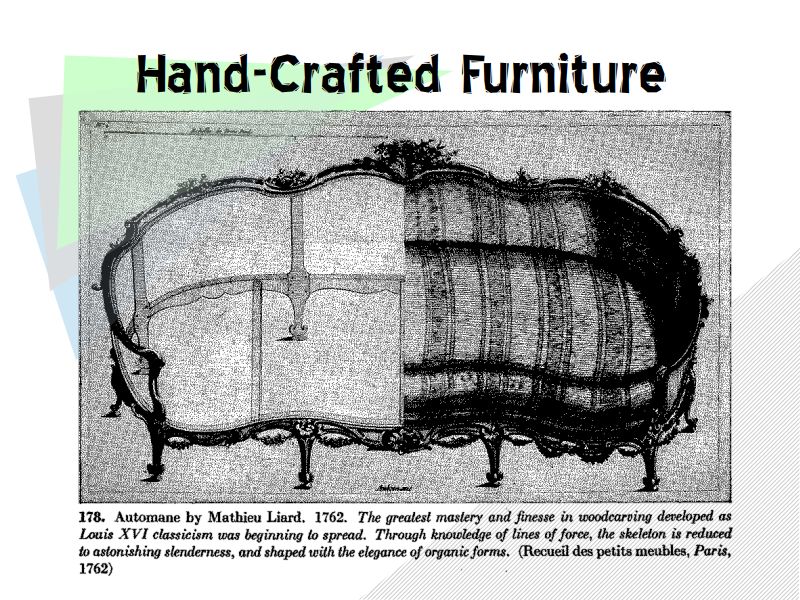
Giedion’s second book, Mechanization Takes Command goes beyond Architecture. It showcases the many handicrafts of other various skilled artisans during and after this time which are exemplary of unified form and style.
In the domain of seats, the science of engineering was finessing the hand-fashioning of ever-finer wooden frames capable of bearing the weight of the human body while still imbued with aesthetically-pleasing, organic forms. By even the mid 18th century Giedion finds this unity evinced in popularly-purchased handicrafts.
Of all the many facets of human life surveyed in Mechanization Takes Command, Giedion’s treatment of chairs must suffice here to illustrate the cultural schism he tracks throughout the massive disruption which was about to come.
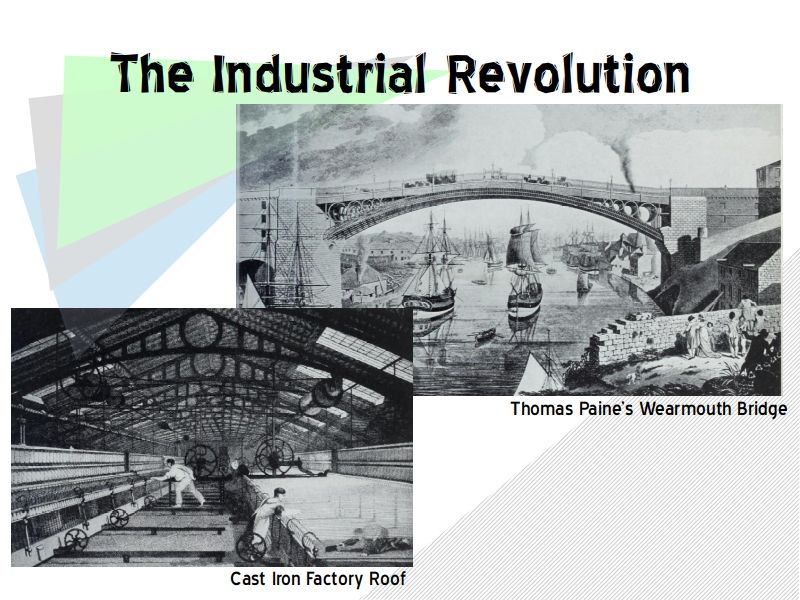
As the unified artist-engineers of the renaissance were being let off the leash in the Baroque period, something was afoot in the British isles. Fast-growing cities like Manchester and Birmingham epitomized a new form of totally unplanned form: the factory town. This was driven by systematic refinement and up-scaling of production techniques for two fundamental materials: cotton and iron. As the formalism behind perspective art had lead to the precision of engineering, It became ever easier to anyone to simply draft a design on paper and pay to have it fashioned and delivered. With developments of iron casting, the structures making up a city came to be created piece-wise in factories and assembled on-site, beginning with all the buildings in the factory towns themselves. And these buildings didn’t need to be pretty, they just had to be functional. Across developing America, iron-works was essential for erecting much-needed infrastructure.
The industrial revolution, the abrupt increase in production brought about during the eighteenth century by the introduction of the factory system and the machine, changed the whole appearance of the world, far more so than the social revolution in France… political revolutions subside, after a certain time, into a new social equilibrium, but the equilibrium that went out of human life with the Industrial revolution has not been restored to this day. the destruction of man’s inner quiet and security has remained [it’s] most conspicuous effect. The individual goes under before the march of production; he is devoured by it.
The take-off of plans made on paper, easily manifested by manufacturing processes at massive scale was called Industrialism. It tore an abrupt, radical split in the methods of human artifice. Buildings ceased to be the exclusive domain of architects. And architects, artists of buildings, were very slow to take on the ugly new forms and materials, understandably favouring hand-fashioned quarry stone and wooden frames. They clung to the human scale.
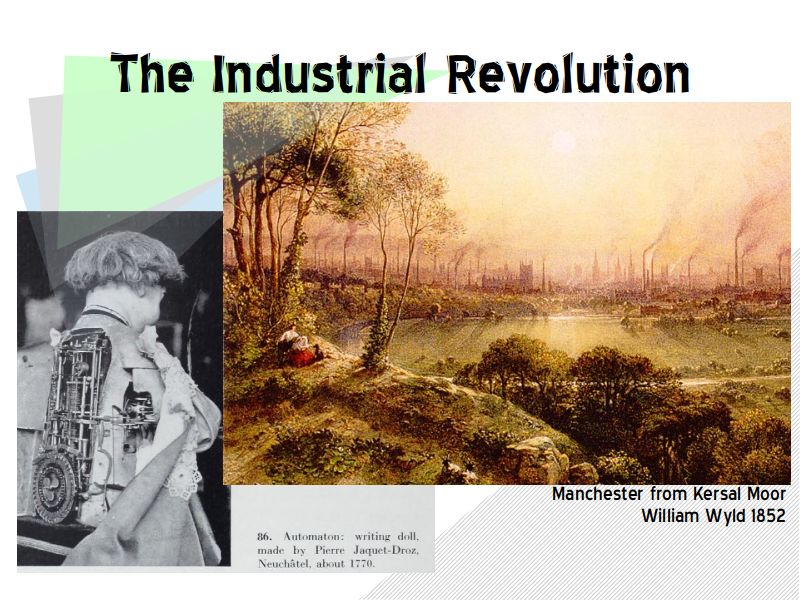
High art, objects to be appreciated aesthetically, started to drift from objects of pure use. Despite protests against ugly utilitarian iron and cheap manufactured wares, the human imagination, inspired by the unlocked potentials in the sciences and techniques, had been aching to express itself in these new forms. Often suppressed by conservative social forces, the urge to invent was never stopped, but only diverted into strange outlets. Inventive visionaries inevitably drew out from the fecund potential of industrial production a unstoppable wave of material forms both hand-crafted and manufactured, from creepy life-like mechanical dolls, fashioned with watchmaker precision, to entire dystopic hellscapes of endless factory cities pumping out billows of smoke and bolts of cloth manufactured on spinning jennies and automated looms.
Of the 18th century, Giedion writes
Everyone was inventing… Many of these inventors did not even take the trouble to protect their discoveries by taking out patents on them. Many, far from drawing profits from their inventions, were even persecuted because of them. Profit-making and unfair exploitation belong to a later period.

Continuous development of technique and engineering lead to ever-more intricate and efficient planning and precision in manufacture. By the end of the nineteen century, the framework of massive structures could be designed and ordered for perfect on-site assembly out of delivered parts with error tolerances of one-tenth of one millimeter. Carefully drafted, hand-drawn paper plans contained within them realizable physical forms of near-unbounded scale, from pocket-watches to super-structures of iron and glass.
And yet, this carried on in a world still divorced from that of human feeling, taste, comfort, and culture.
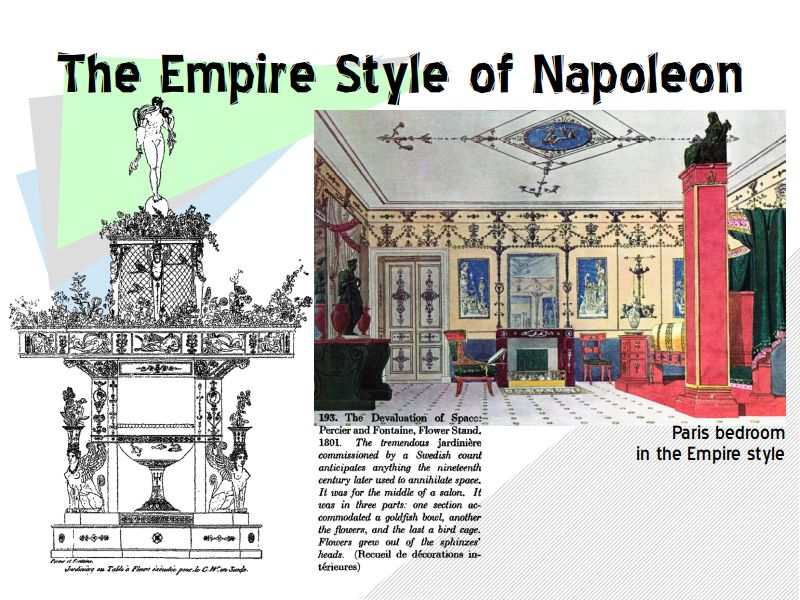
As the practical, science-minded thinkers had been going their own way in industry and manufacturing, The arts were being lead into derivative revivals of classical styles.
In 1804, Napoleon became the Emperor of France, and his aesthetic taste came to establish the Empire style, which spread across the whole world in democratized form even long after his death. Napoleon was a self-made man in a new century, but he sought to imitate the ruling dynasties of old Europe.
To become their equal he adopted their titles, their ceremonies, their forms of government. To become one of them he mingled his blood with theirs in marriage, miscalculating so far as to believe that a new dynasty might be founded in the nineteenth century. Beside him the monarchs of his time are without stature. Yet as soon as he seeks to be their equal, they tower over him. In other terms, it is as if a modern painter were craving admission to the French Academy.
Napoleon’s dimensions never allowed him to deal in half measures. He willed a style worthy of the Caesars and of himself, and did not hesitate to make this setting his own. It bears his imprint through and through.
Napoleon’s Empire Style grew mostly from two artists he patroned, Charles Percier and Pierre Francois Louis Fontaine. The primary elements of expression was ornament and flourish. Technical innovation, functionality, or balanced, proportionate floor plans played no role in their interior decorating or architecture. Everything was aesthetic, and the more the better. Richness in superficiality reigned, and subtlety and reserve were banished. In Empire Style, utility comes a distant second. All possessions become, first-and-foremost, display pieces.
Why have one sphinx when you can have four, topless, balancing flower pots on their heads?
What takes place in the Empire style is nothing other than a devaluation of symbols. As Napoleon devaluated nobility, so he devaluated ornament.
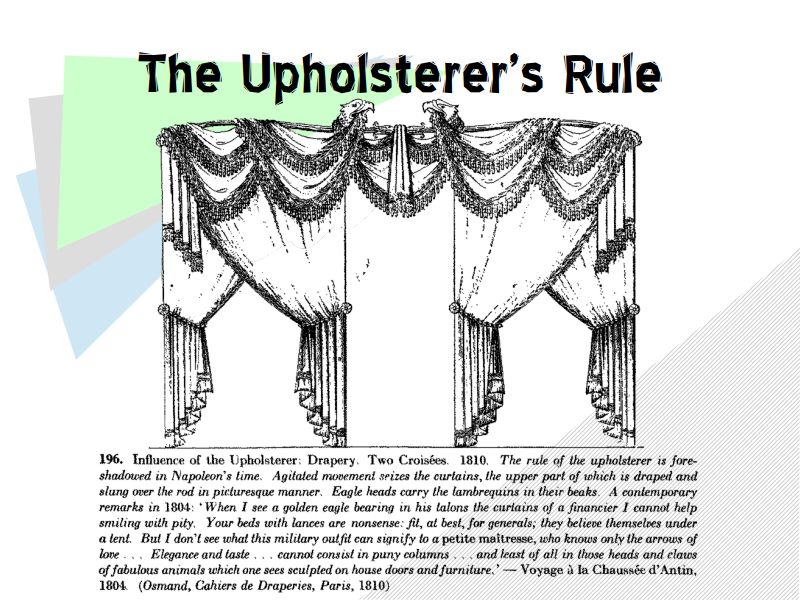
He continues,
This devaluation of symbols is seen time after time in the Empire style. The laurel wreath, which the Romans used sparingly because of its significance, forms almost the trademark of the Empire style… it spreads like ivy over entire pilasters, or is stamped upon the walls of the Tuileries throne room which Percier and Fontaine decorated for Napoleon. And is it not telling that one felt no incongruity in using friezes of crowning victories with palms even on teapots? Or that the thyrses staff, caried in antiquity by the worshipers of Dionysus only at the most solemn festivals, now serves as a curtain rod?
The substance of these and subsequent Empire-style designers was surface aesthetics. Their drawings and plans, unlike the engineer, were of superficial appearances, space itself becoming a canvas of juxtaposed symbols without consideration of the form of the whole either materially or spatially, or practically.
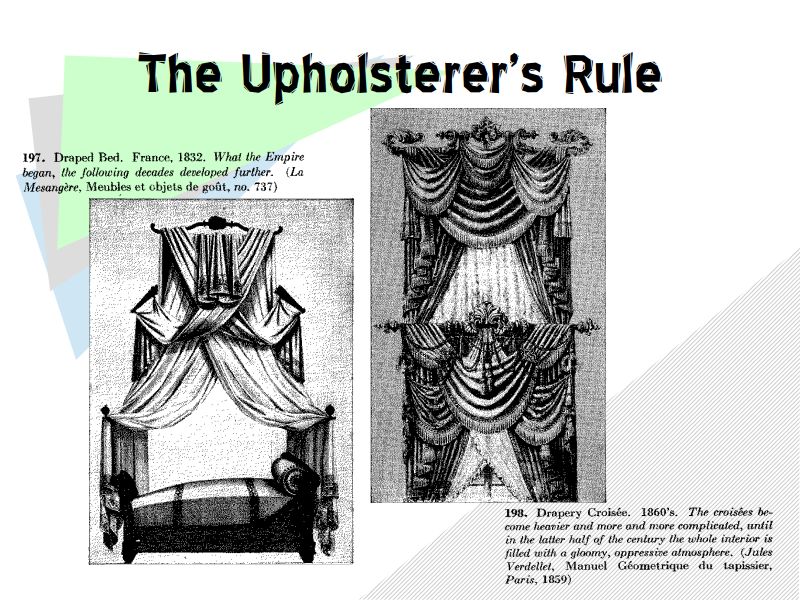
The decisive step toward the nineteenth century in Empire style was the beginning of spatial disintegration…. Pieces are often conceived as isolated entities, and furniture loses its relatedness to the surrounding space.
Here the upholsterer, the decorator, announces his claim to leadership…. fabric soon wrapped space in its garments, muffling all boundaries.
The florid drapery was of calculated carelessness. Skilled workers knew how to cut and sew these difficult pieces, and to cast them with casual affect over their curtain rods. Fringes, double or three-fold, give additional weight. The calico curtains, asymmetrically crossing, are gathered in generous folds…. Windows, doors, and alcoves are abandoned to the upholsterer’s fancy.
Mechanization played a key role in this movement from the measured, proportioned spatial conception of the renaissance architect, to the space-obliterating maelstrom of transient, superficial re-dressings of surfaces by the interior decorator who blankets and shrouds everything in cloth. The environment created by upholsterer’s, like dastardly UX designers today, was an intentional misdirection thwarting any sense of the real material world. Continues Giedion:
Mechanization confused the human environment — [with] symptoms such as the industrial reproduction of art objects, the counterfeiting and adulteration of handicraft methods, and a decaying sense of material.
Lost, it would seem, was man’s instinct for quiet surroundings and for the dignity of space. The same temper pervaded all classes of society. Only the materials and execution vary. The statutary may be in chiseled bronze, or, for the less wealthy, cast iron; marble or plaster,; china or paper mache; hand-wrong silver or pressed tin. the process moves on to attack wall and floor surfaces; the carpets may be oriental or machine-made, the pictures original or chromolithographs.
at no other time in history did man allow the instinct for the goodly ordering of his surroundings to suffer such decay.
The ubiquity of mechanized goods led to a market driven by what Giedion calls “Ruling Taste”. As centralized planning decayed in the Baroque period, ruler-ship was now democratized by the unrefined tastes of the market.
Beginning with the Empire Style, demand for certain aesthetics would come in waves, based on the whims of the crowd. It is the beginning of fads, of the feelings of the masses subsumed by the transient mood of the moment, often dictated by nostalgia for lack of any ingenious leaps which would require creativity or daring.
Perhaps the most characteristic feature of nineteenth-century architecture is its addiction to “period pieces.” All the important buildings, all those edifices from which the spectator imagined himself to gain a serious aesthetic impression, appeared in elaborate historical dress. The theoretical issues which received most attention at the time were those raised by the various “revivals” — now classical, now Gothic. Advances in building technique seem to have brought with them only the practical problems involved in using new methods to produce old effects….
Art in Europe was stuck re-circling old ground, meeting the ruling taste of a new consumer crowd who increasingly didn’t know what they wanted next, gorging on the sensory stimulation of ever-more extravagant embellishments and reminisces evoked by endless remixes of the old and the familiar.

The desacralizing and auto-cannibalism of symbolism, ornamentation, and all material artifacts lead to increasing ennui and panic by artists and aesthetes who were helpless to respond except to continue covering it all up with more and more layers fabric.
They stood opposed to mechanization, to the heartless, unfeeling forces of industry which produced an ever-fake world, even while it facilitated the up-scaling of their work for sale in the mass-market. As they tried to run from the inescapable technology, their feelings came out in their work, turning the spaces of human activity into a false, illusory dream-world where superficial appearances could only obscure its material and formal constitution. In seating, the manufactured nature of factory-made, affordable couches was upholstered-over until swallowed whole by cushioning.
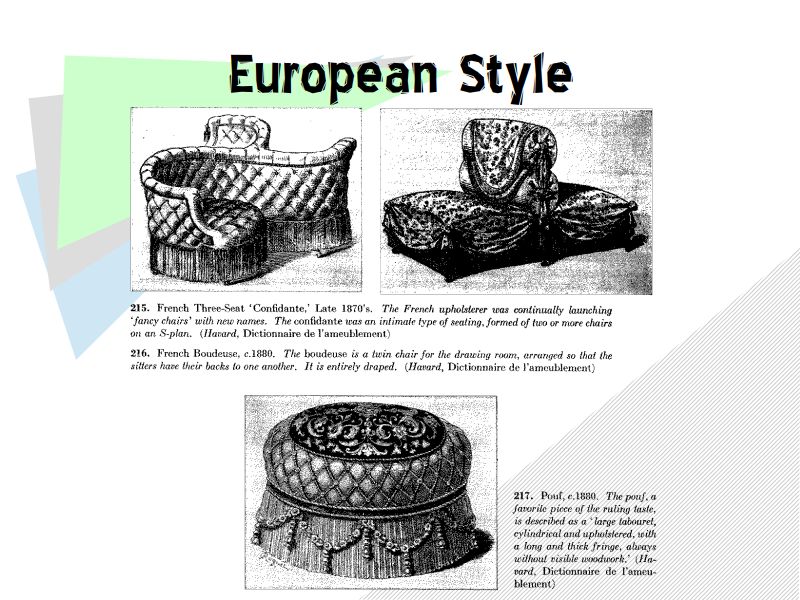
The furniture of the ruling taste assumes to liberate a wealth of feeling and fantasy. But its pieces were not created in the most direct way. They were reflectively created. T.S. Eliot calls the poets of the Victorian taste ‘reflective.’ ‘They think, but they do not feel their thoughts as immediately as the odour of a rose.'[,as Elliot puts it.] No less than poetry of the ruling taste, intimate surroundings were created reflectively. Lacking the leap into the unknown, the inventive. A powerful side of the nineteenth century is here revealed: the mask-like. Its view of real life is as deceptive as that of a wax museum.
And yet, in a domain far away from aesthetics and ruling tastes of Europse, a way out of the cul de sac of being smothered by machine-woven pillows was being innovated.
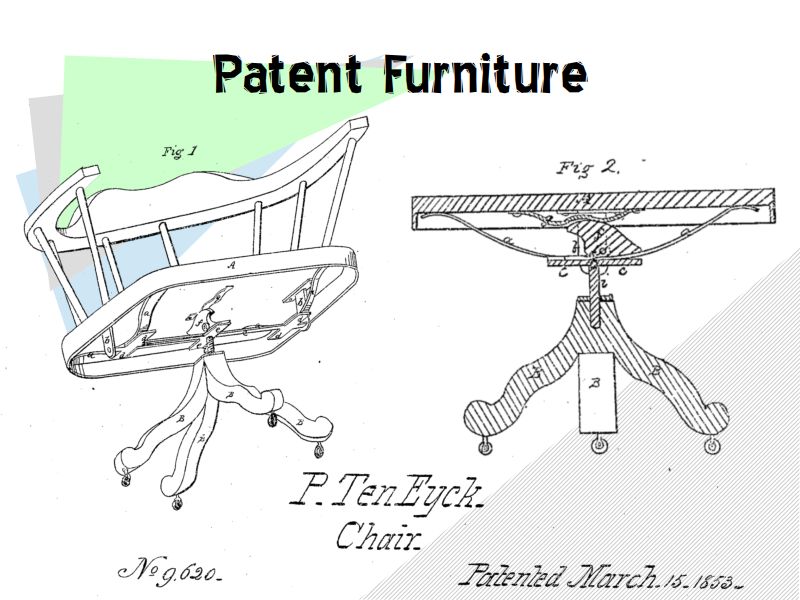
Continues Giedion:
Over and against this stands patent furniture. Here there is no room for reflection. All derivative feeling has fallen away as the skin from a skeleton. Sometimes patent furniture strikes the grotesque: often it is congenial and startlingly direct. In this furniture, whose sole aim is to serve needs previously without claim or without solution, and whose construction rules out everything but bare formulation and inventive fantasy, the create urge succeeds in piercing through.
The U.S. Patent system was formed in 1790. As the wiki-article puts it, a patent is a right granted to the inventor of a process, machine, article of manufacture, or composition of matter that is new, useful, and non-obvious. For the purposes of this series, we will think of a patent as hardware source-code. A patent document spells out in meticulous detail the form and functionality of the creation being protected for exclusive manufacture and sale by the owner and for whomever they license permission.
In researching Mechanization Takes Command, Giedion poured over dozens and dozens of patents, meticulously tracing the development of technology throughout the industrial revolution. After a section on old-fashioned, hand-made rocking chairs, the book moves to the first American patent for a new mechanized rocking chair, which pivots tightly just below the seat instead of rolling across the floor in broad sweeps. The movement is buffered by springs to prevent the sitter from violently flopping forward or backward. This new rocking chair also compounds the motion with the ability to rotate, or swivel.
Giedion writes:
The chair of 1853 was meant for relaxation. Its inventor, Peter Ten Eyck, a name as unknown as those in a telephone book, had nothing in mind beyond an improved rocking chair, or, as he calls it, a ‘sitting chair.’ No one thought of its one-sided use in the office. The fifties used chairs of this type in the home.
Americans, developing their own styles far from the influences of European aesthetics, embraced the new industrial forms nakedly and without shame.
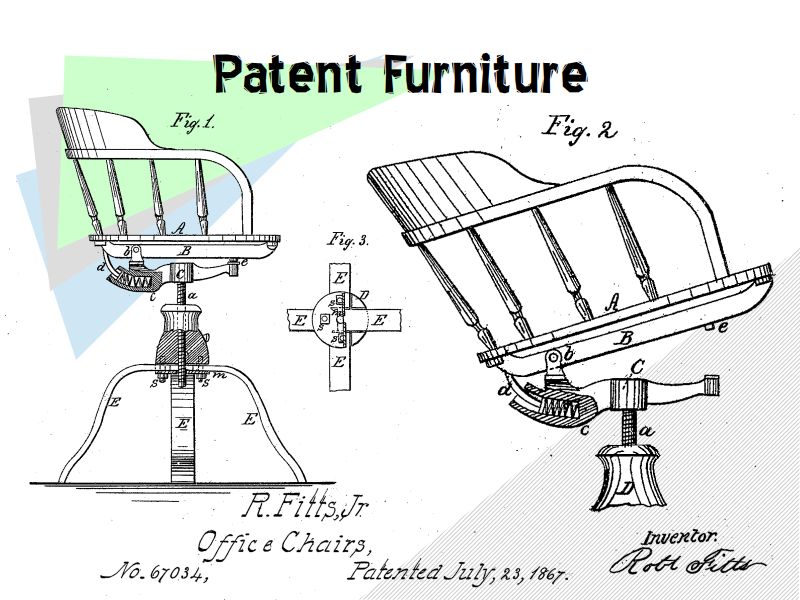
Here we see a design for a better mechanical chair, now specified as an office chair, with improved rocking mechanism *and* the added ability to be raised and lowered. Again, an unknown, uncelebrated name, Robert Fitz Jr. of Fitchburg Massachusetts, claims this achievement in innovation in the anonymous history of our modern world.
Of America at this time, Giedion says
In the four decades from 1850 to 1890 no activity of everyday life was taken for granted. An unbridled inventive urge shaped everything anew. Furniture, like other things, underwent transformation. This called for an independence of feeling and a courage to see with new and untrained eyes. These very qualities *made* the nation’s vigor at that stage. No conventions cramp the combinatory faculties, whether the anonymous inventors develop types for new purposes or whether they endow existing types with an undreamed of convertibility and mobility.
Under the patent system, says Giedion:
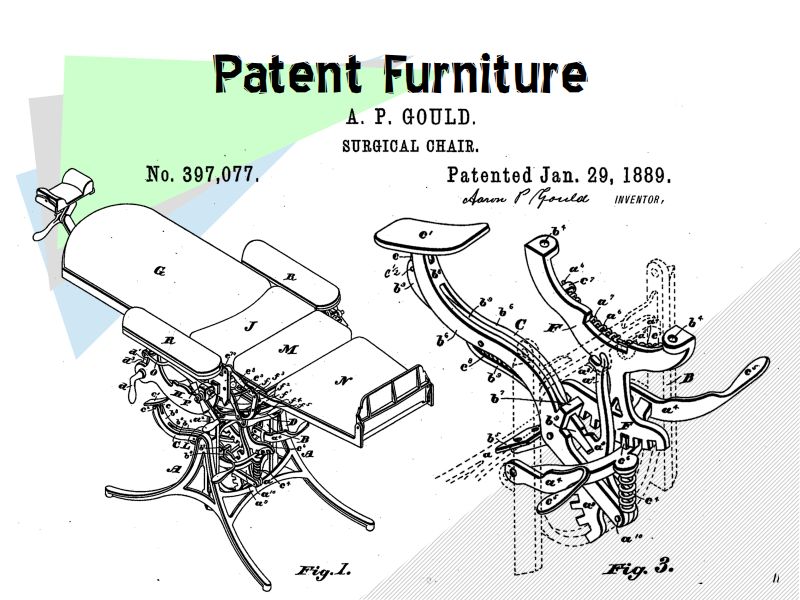
Furniture was dissected into seperate elements, into seperate planes. These movable elements, which a governing mechanism linked and regulated, enabled the furniture to change in adaptation to the body and various postures. The furniture was thus endowed with a flexibility unknown before, and ceased to be a rigid, static implement…. Patent furniture could perform alternate functions. What interests us more, it could take on any desired position of the human body, change from this position, and return to the normal. Comfort actively wrested by adaptation to the body, as against comfort passively derived from sinking back into cushions — here is the whole difference between the constituent furniture and the transitory furniture of the last century.
While the slaves to European ruling taste were rearranging the ornamentation and fringe of over-crowded salons, exhausted for new ideas, Americans were embracing the core of cultural growth, building from the fundamentals of technique, motion and form with practicality and simplicity. However,
In the ’90s an influx of European ruling taste flooded America. Well known as the turning point is the Chicago World’s Fair of 1893. The attitude that it enthroned, a surrender to copied Classical architecture in direct supply from the French Academy, rejected the flat machine-made surfaces of American equipment as too meager, and the patent furniture as ridiculously out of place. Mechanized furniture disappeared from living quarters. People began to be ashamed of it. From then on, the whole movement gathered around furniture for special, technical purposes. Patent furniture was banished from the house, and countless attempts to create a truly nineteenth-century comfort went to waste.
And thereafter adjustable chairs like this would be relegated to hospitals and doctor’s offices, and not the private residences of normal, well-adjusted people. In the history that might have been, Aaron P. Gould of Canton Ohio would be revered and forever remembered by more than just surgeons and dentists for his contribution to the essential science of dynamic seating. But it was not to be, thanks to the 1893 Chicago World Fair, ya know, the one with the Ferris Wheel. Now, instead of consciously merging with machines like anime pilots climbing into robotic exo-skeletons, American’s sink somnambulistically each evening into the dark, Lovecraftian, unfathomable mechanical mysteries of that squishy black box, the 1928’s La-Z-Boy recliner.
Giedion continues
This happened at a time when Europe was beginning to realize into what plight it had been drawn by the ruling taste.
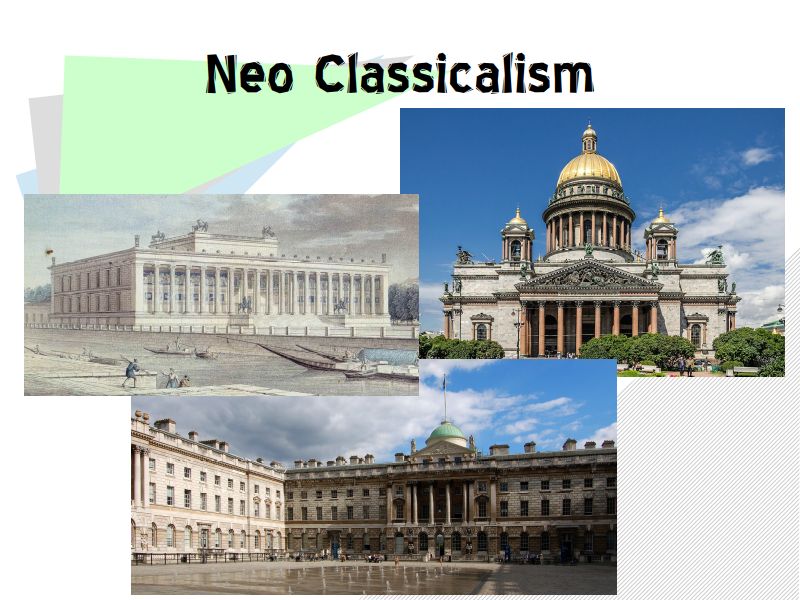
A radical new development rising on the continental artistic horizon sparked this awareness, threatening the now moribund Neo-classical hegemon of Empire style.
In Space, Time and Architecture Giedion writes
For a hundred years architecture lay smothered in a dead, eclectic atmosphere in spite of its continual attempts at escape. All that while, construction played the part of architecture’s subconsciousness, contained things which it prophesied and half-revealed long before they could become realities. The constituent facts in the nineteenth century can often be found in construction when the ruling architecture gives no clue to them. It is construction and not architecture which offers the best guideposts through the century. (STaA 24)
And in Mechanization takes command:
Sheltered in the shadow of industry and protected by the authority of science, engineers were not hampered in their development, for they did not have to play up to the ruling taste. Although their names were unknown in their day, they are noted in history and will not be forgotten. (pg 275)
Could any engineer stand a chance having their name publicly remembered in the same vein as the great renaissance and baroque artists? Could the lifeless, historically-ruminating ruling taste in architecture be forced awake, dragged into modernity? The answer came when the proposal by a French construction firm was selected by the organizers of the 1889 Paris Exhibition to provide their monumental centerpiece exhibit.
The firm had, until then, only been known for constructing railway bridges in the middle of nowhere, and remember you can’t even see a bridge when you’re on it! Their last project had been the massive, half-kilometer long Garabit Viaduct, designed by company founder and lead engineer, Gustave Eiffel.
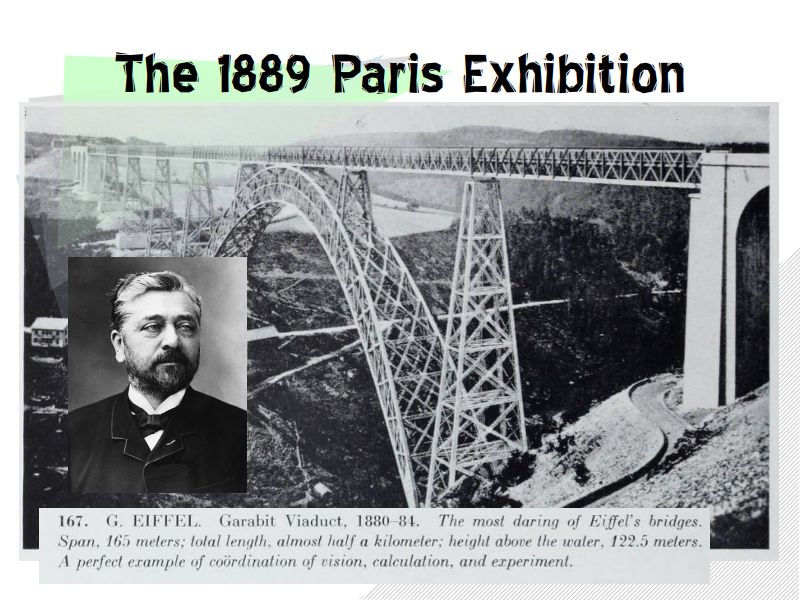
After the initial proposal for the Paris exhibit was accepted, it took two years for the caluclations and plans of it’s 18,038 parts to be calculated and drawn up before another two years of manufacture and assembly.
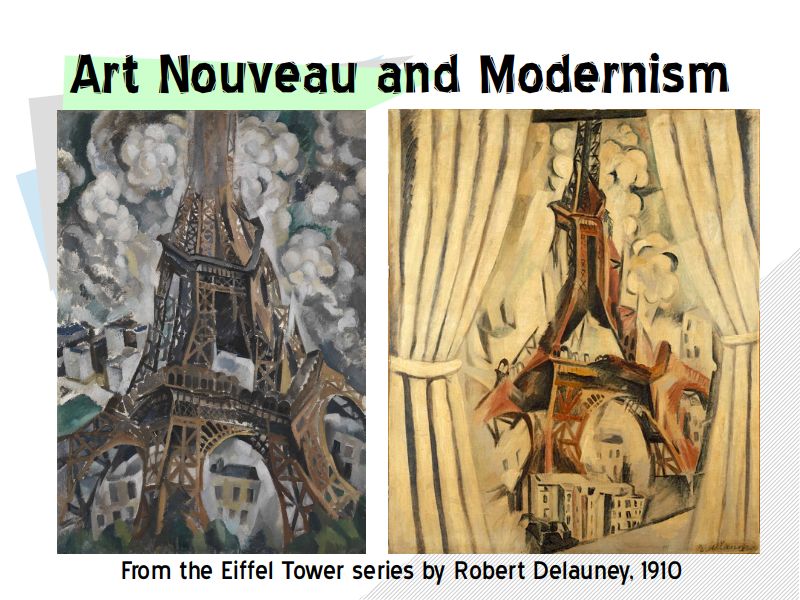
The Eiffel tower, tallest in the world, tore through not just the Parisian skyline; the raw engineering which like a dirty secret had under-girded the civilized world so discretely, which so suddenly and immodestly dominated the French capital had, for its sensitive, aesthetically cultivated victims, torn a hole in the fabric of reality itself!
The artistic psyche of Europe was devastated. There were protests and petitions against its erection. It was monstrous, a menace, a disgrace.
According to Giedion it took twenty years for the tower to become feasibly integratable into artistic sensibilities. And that was at the price of the total explosion and obsolescence of the Renaissance Euclidean spatial conception by Minkowski’s formulation of the space-time continuum and Einstein’s theory of relativity!
Giedion quotes poet Blaise Cendrars
At that time there was no artistic formula that could claim to express the plasticity of the Eiffel Tower. Under the laws of realism it crumbled, and the laws of Italian perspective could not catch it. But Delauney wanted to find a plastic interpretation. He dismembered the tower so that he might enter within its frame; he truncated it and inclined it to make it express the vertigo of its full three hundred meteres; he took ten standpoints, fifteen outlooks; he looked at this part from below, that from above, the surrounding houses from the right, from the left, from the wings of a bird and from the bed of the earth.
And so, as the century turned, likewise would the entire art world be turned upside down, disoriented, and shook of all of its sureties out through the opening first pricked by Eiffel’s indecent exposure. The terrain of modernity had sliced irreparably through the canvas of tradition’s map, leaving perhaps the clearest path the one towards perdition’s flames.
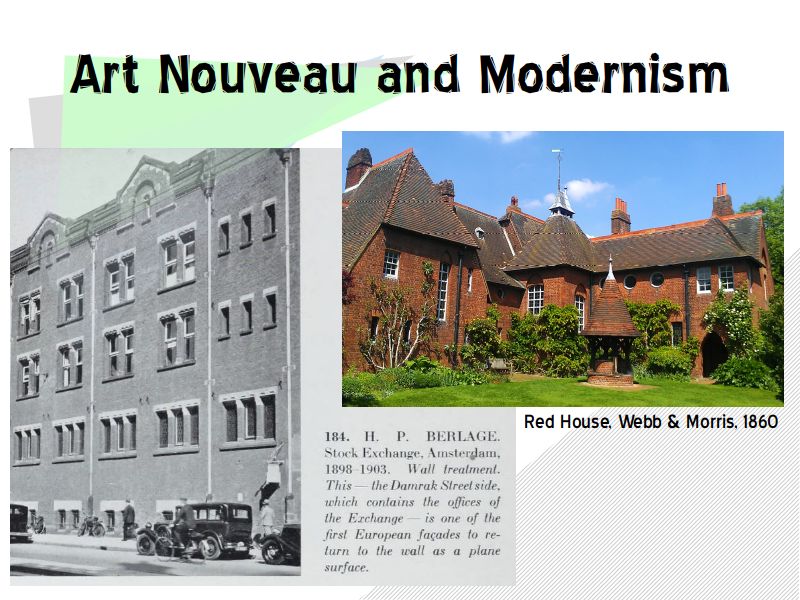
Fortunately, new ways forward had been simmering for decades. In architecture, various subtler integrations of form with aesthetic had been incubating in seclusion for years before the impetus for the new burst in to the fore with over-riding urgency in the 19th century’s close.
William Morris was among the first artists who, out of desperation, was driven to take-up architecture, so as to have an honest house in which to start and raise a family. Detesting the ubiquitous, highly ornamental styles of his day, his Red House was made shockingly plain and based on medieval and Gothic forms not as superficial imitation but as practical means of construction.
A few decades later an entire scene of like-minded revolutionaries had grown up in protest of Neo-classical revivalism, and all returned to basics using materials of modern constuction as elements in the aesthetic features of their architecture and interior design.
In his 1894 textbook Modern Architecture, Professor Otto Wagner of the Academy of Vienna despaired the layman’s judgment which
always has been, and is, disastrous in it’s influence.
Wagner, a seasoned architect pushing back against the moribund ruling taste, held with Goethe’s dictum: the artist must create what the public ought to like, not what it does like.
The works of this new movement was shared world-wide in a periodical called L’art Modern, which remained in print over 30 turbulent, transformative years.
In it’s first issue, it’s mandate is spelled out:
Art is for us the contrary of every recipe and formula. Art is the eternally spontaneous and free action of man on his environment for the purpose of transforming it and making it conform to a new idea.
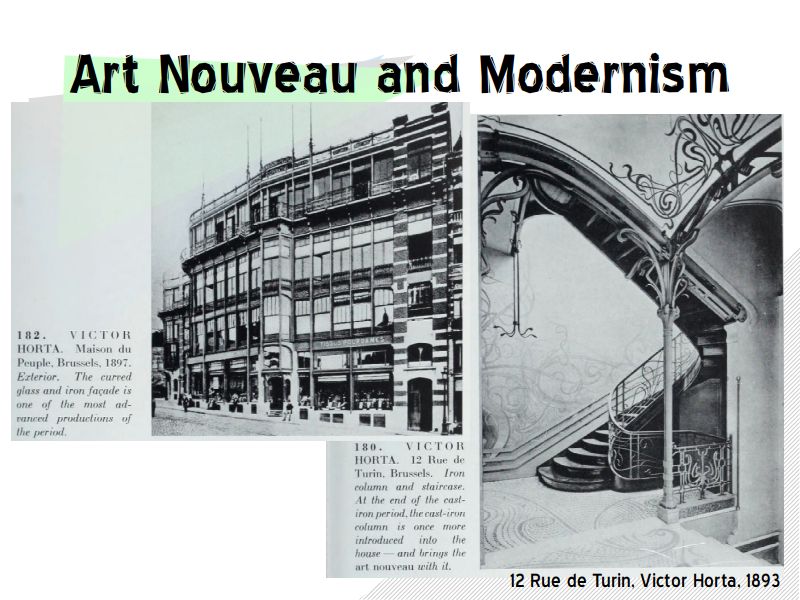
One of it’s first sallies to tradition was Victor Horta’s total gutting and re-construction of the interior of residential address 12 Rue de Turin in Brussels. It was, like an American house, designed first to be functional for the resident. Its floors were broken up into various levels throughout, and the main staircase featured exposed, elegantly fashioned bare iron railings and columns as part of its finished design. This was a totally new and daring aesthetic innovation.
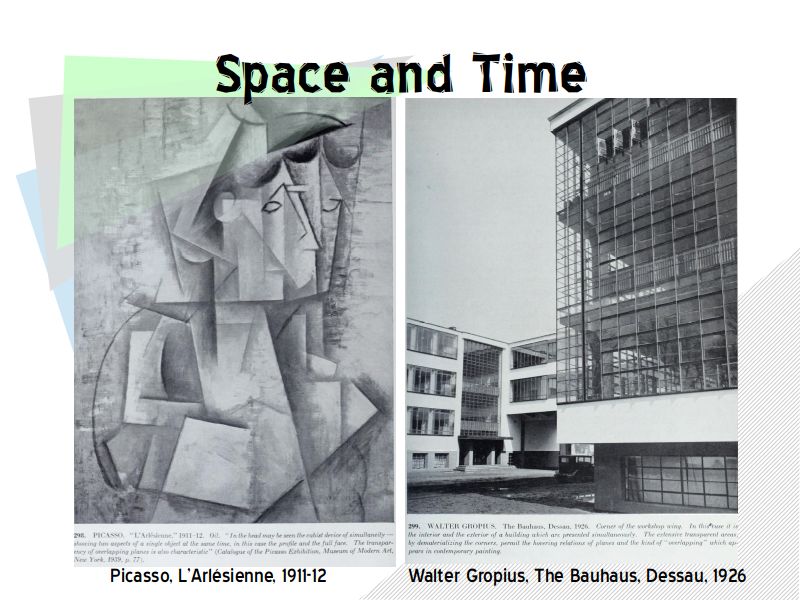
Developments in science and engineering were, however subliminally, now being expressed through the productions of artists and designers. This, for Giedion, is the mark of a transcendent spirit which resonates in any age across all of its various fields through the sensibilities of its receptive and productive creators.
The painful, belated capitulation of artistic sensibility to scientific insight had resulted in the traumatic works of Picasso expressing a world beheld anew, where once-solid objects, frozen in time, were now seen twisted-about with all facets present. The single perspective of the renaissance was shattered, strewn across time in constant motion, transparent for being exposed from all directions simultaneously in the imagination.
Modern art is thus the result of the hurried attempts at re-aligning aesthetic feeling with the functional realities and brisk pace of the long-industrialized, long-mechanized landscape which romanticism and nostalgia for too long had tried to obscure with its desperate facades. As containment failed, the sensory onslaught upon the heart by new forms torn away from comfortable nostalgia and tradition impelled artists to re-sort and re-interpret their renditions of reality from the ground up according to the new math and sciences which were shaping it; even in spite of the mathematicians and scientists who did not reciprocate with recognition of their own formulas when expressed in paint, sculpture, or architecture.
In new building designs, transparency and perception of fullness of form from any given angle was given priority.

Among the most prominent of architects experimenting with the new 20th century spatial conceptions was Le Corbusier.
Of this particular design , Giedion writes
It is impossible to comprehend the Savoie house by a view from a single point; quite literally, it is a construction in space-time. The body of the house has been hollowed out in every direction: from above and below, within and without. A cross section at any point shows inner and outer space penetrating each other inextricably. (pg 518)
Fundamental to Le Corbusier’s work was a new basic construction material, only just coming into maturity.
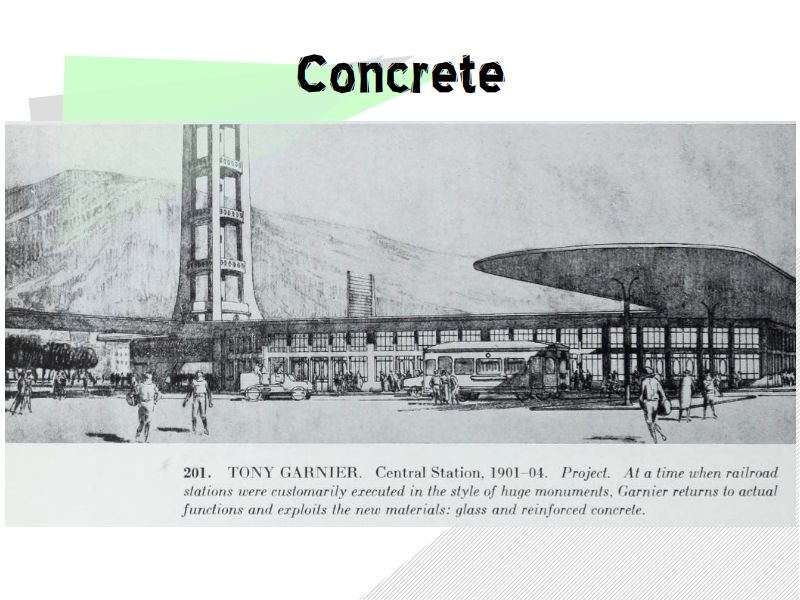
It was a wet compound of quicklime, clay, sand, and crushed iron-slag which could harden into stone in a matter of days. Concrete was quickly taken up as an medium for architectonic expression in the modern art revolution, and its various molded forms became emblematic of a century breaking free of its past into a daring, plastic new future.
Giedion’s endless excavation of the past was a way to orient the present here in situ, and restore an integral sense of place and meaning for moving forward. While most of Space, Time and Architecture and Mechanization Takes Command are retrospective, this is precisely so as to contextualize the mid-20th century West as continuing on an long, unbroken implicit trajectory from out of the past. His criticisms and insight on anterior and contemporary forms gracefully drop the reader into a newly-enriched perception of the present moment, in which they themselves play an essential, constitutive role, freed from both the transience of the ruling taste and the mood-swings of its passing fads, and the inhuman utility of abstract engineering cold to human feeling and aesthetic.
Mechanization Takes Command closes with a section which covers the ancient origins of public bathing and religious cleansing, moving to several abortive attempts to import saunas and Turkish bathhouses into Western society, culminating in the emergence of sun-bathing as a leisure activity, and the precise means of manufacturing bath-tubs affordable and durable enough to facilitate our present enjoyment of our private residences which each feature their very own indoor bathroom.
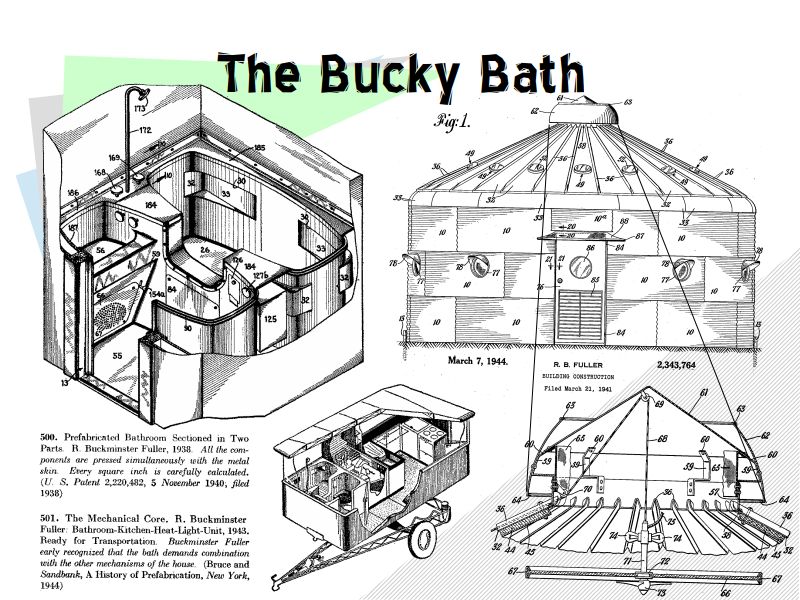
Projecting into the future, Giedion examines some patents by Buckminster Fuller for his vision of the fully automated home for the whole planet. Fullers factory-built houses are designed around a pump, water heater, furnace, fuse panel, and all other complex mechanical infrastructure of the modern household composing a “mechanical core”.
Giedion complains that Fuller, all head and no heart for aesthetics, risks undoing decades of humanization with his rush to churn out mass-produced machine-centric, fully industrialized housing units for all of humanity. Of Bucky’s assembly-line dwelling unit, he writes:
freedom to alter the ground plan or add to it is abolished, the dweller being imprisoned within the rigid, uniform shell. Why? Because in the center, within its mast, sits a robot, the mechanical core, tyrannizing the whole structure.
A house is neither an automobile nor a trailer. Houses do not move. Houses stand on a specific site and must adapt themselves to this environment. Houses rolling ready-made off the assembly line will but rarely satisfy on this score. Hence, the solution of the mechanical core, like that of the prefabricated house, depends on one condition: freedom allied with co-ordination. For neither he who dwells in the house nor he who designs it should suffer himself to be tied. That is, the task of mechanization is not to deliver ready-made, stamped out houses or mechanical cores, but flexible, standardized elements admitting of various constellations, so as to create better and more comfortable dwellings.
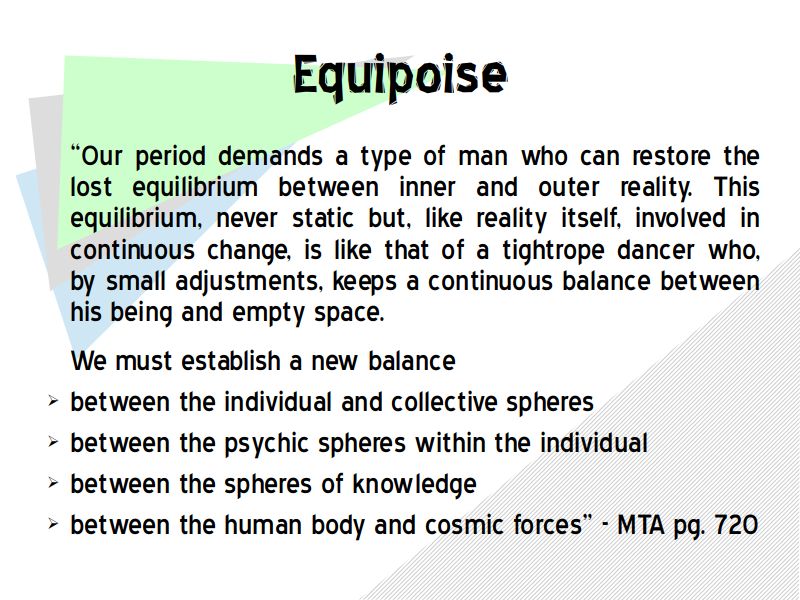
Moving in one direction, Giedion applied the techniques of art criticism to the engineering evinced in patents, product catalogues, xylographs and photographs of factories and mechanisms. Simultaneously moving in the other, Giedion revealed the engineering and mechanisms beneath the forms, styles, symbols and ornaments of art and design which expressed the aesthetics and emotions of various ages. By walking this line of force, bearing the tension of these opposing motions, Giedion blazed his own trail through to the reunification of heart and mind, of thinking and feeling. This balance of opposing sensibilities was his formulation of a notion expounded by German poet Fredrich Schiller: that of “equipoise”.
This term is rich in suggestion. To think of a parkour artist, a tight-rope walker, an athlete, gymnast, or dancer—anyone with poise—is to think of someone who’s body is trained into perfect harmony with its environment. Their grace comes from their relationship with their grounding within, and mastery over, the material arena with which it interplays. Anyone skilled with a tool, who trains to eventually wield it as a naturally extension of their body, appreciates intrinsically the functionality of its form. So likewise anyone who fancies themselves a critic or an engineer, who unpacks what they sense into the dynamic its constitutive parts, must train to achieve a similar balance of cohering thinking and feeling to re-cognize real meaning in the world.
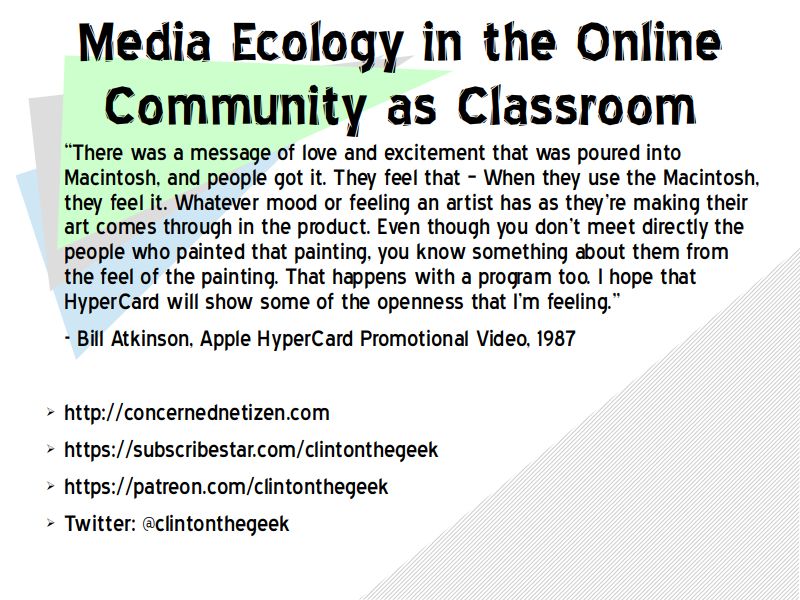
Perhaps, in the 20th century, as aesthetic expression and artistic sensibility on the one hand, and scientific discovery and engineering practice, on the other, converged in all levels of material production, so too could the inner-psychic lives of humanity be gently guided into the reunification of feeling and thinking. This is the hope of a Siegfried Giedion in war-time, desperately collecting and studying research materials for these two great volumes, ever-striving to rediscover the living, human soul of the West as we have inherited it. As we get into McLuhan, you should now recognize the sensibility of a soul in equipoise embodied and in action as television dawns on the post-war scene.
In compressing these very-dense, very long books covering centuries of trans-Atlantic history, I’ve had to indulge in some artistic license and dramatic liberty my narrative. When you read the books, and you really should, you’ll find that I left out all the most interesting stuff! But I hope that I have concentrated an ideal distillation of the approach Giedion takes to humanity’s relation to our constructed environments; the approach which McLuhan deftly adopts and adapts for his and our purposes today.
The point is, space is not dead or inert. Our shared, real world is alive, the culmination of all the minds whose dreams and visions compose its very substance. Our material world itself has sprung from human imagination, and lacks life in our sense of it owing only our ignorance of its anonymous architects and their mastery of the materials and forms of their day. Likewise inventors and engineers who use technology to make things possible drift in and out of confluence with fulfilling the emotional and aesthetic needs of human comfort and well-being. With the return of salience to our world’s constitution as both machine and work of art may come also new common ground upon which humanity can gather in understanding.
While the English student McLuhan had been a man of words, seeking unity in their perfect juxtaposition and delivery, Engineer and art historian Giedion was a master of objects and their placement within greater perceptual schema shared by common culture capable of communion around them. Soon we’ll see how these ideals of perceptual equipoise in a changing landscape prepared McLuhan for realizing immediately the ramifications of television’s arrival on the domestic scene.
On June 26th I’ll be in Toronto for the Media Ecology Association’s annual convention, where I’ll cut straight to the chase regarding the computer stack and it’s place in our modern environment as it relates to what we’ve just gone over. A lot has changed since my initial submission, so I look forward to talking about and meeting lots of people over the course of those five days. If you like where this is going, consider sponsoring me on Patreon or subscribe star, or just share my site around, concernednetizen.com. Until next time, take care!
Leave a Reply